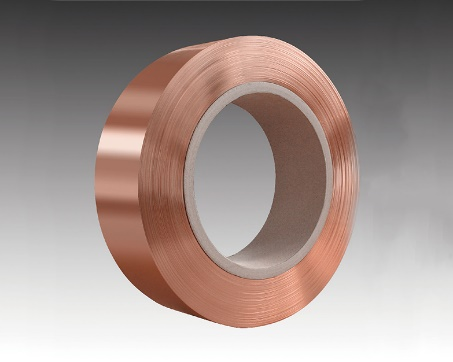What is the purpose of copper cladding on a transformers?
What do I need to pay attention to in the manufacturing process?


Copper cladding on a transformer serves several important purposes.
Copper is a highly conductive metal and is used in transformers to enhance electrical performance and efficiency. Here’s why copper cladding is used in transformers and what to consider in the manufacturing process:
Purpose of Copper Cladding in Transformers:
- Improved Conductivity: Copper is an excellent conductor of electricity. Cladding the transformer’s core and windings with copper helps reduce electrical resistance, ensuring efficient power transmission with minimal energy losses.
- Reduced Losses: Lower electrical resistance leads to reduced copper losses in the transformer. This results in improved energy efficiency and less heat generation, which is crucial for preventing overheating.
- Heat Dissipation: Copper cladding provides better heat dissipation, helping to maintain the transformer’s operating temperature within safe limits. This is especially important for transformers that operate continuously.
- Increased Durability: Copper is a durable and corrosion-resistant material. Cladding with copper protects the core and windings, extending the transformer’s operational lifespan.
- Enhanced Electrical Performance: Copper’s conductivity helps maintain stable voltage regulation and reduces voltage drops, ensuring the transformer delivers consistent and reliable electrical output.
- Reduction of Hot Spots: Copper cladding helps distribute electrical current evenly across the transformer’s windings, reducing the formation of hot spots and preventing localized overheating.
Considerations in the Manufacturing Process:
In the manufacturing process of transformers with copper cladding, there are several key considerations:
- Copper Thickness: Determine the appropriate thickness of the copper cladding. The thickness should be sufficient to provide the desired conductivity and heat dissipation while avoiding excess weight and cost.
- Copper Purity: Use high-purity copper to ensure optimal electrical conductivity. Impurities in the copper can reduce its performance and longevity.
- Joining and Bonding: Ensure that the copper cladding is securely joined and bonded to the transformer’s core and windings. Proper bonding prevents delamination and maintains electrical continuity.
- Quality Control: Implement stringent quality control measures to inspect the copper cladding for defects, such as cracks or air gaps, which can compromise its performance.
- Surface Treatment: Consider applying a protective surface treatment to the copper cladding to enhance its corrosion resistance and durability, especially if the transformer is exposed to harsh environmental conditions.
- Compatibility with Insulation: Ensure that the copper cladding is compatible with the insulation materials used in the transformer. Compatibility is crucial to prevent chemical reactions that could affect the transformer’s performance.
- Cost-Benefit Analysis: Evaluate the cost implications of copper cladding against the expected improvements in performance. Balancing the upfront cost with long-term energy savings and transformer reliability is essential.
- Environmental Considerations: Be mindful of environmental regulations and practices when working with copper, as waste disposal and recycling may be subject to specific requirements.
- Safety Protocols: Implement safety protocols for the manufacturing process, as copper is a highly conductive material. Workers should be trained to handle copper safely, and appropriate safety measures should be in place to prevent electrical hazards.
- Tight Tolerances: Ensure that the copper cladding is manufactured with tight tolerances to maintain precise electrical characteristics and to fit securely over the transformer’s core and windings.
- Welding and Joints: Pay special attention to the welding and joining techniques used in the copper cladding process. High-quality welding ensures the longevity and performance of the copper cladding.
- Minimize Microscopic Defects: Microscopic defects in the copper cladding, such as voids or inclusions, can affect its performance over time. Implement quality control measures to minimize or eliminate these defects during manufacturing.
- Environmental Impact: Consider the environmental impact of using copper cladding. Copper is a valuable and recyclable material, and responsible disposal or recycling practices should be part of the manufacturing process to reduce environmental harm.
- Customization: Depending on the specific transformer application, you may need to customize the copper cladding. Some transformers require unique designs and configurations to meet particular performance requirements.
- Material Sourcing: Ensure a reliable and ethical source of copper for the cladding. Sustainable sourcing practices can align with corporate responsibility goals and minimize the risk of using materials from conflict regions.
By carefully considering these factors during the manufacturing process,
you can produce transformers with copper cladding that are efficient, reliable, and built to last.
Copper cladding enhances the electrical and thermal performance of transformers, making them an essential component in the power distribution system.

